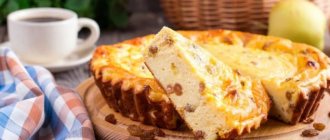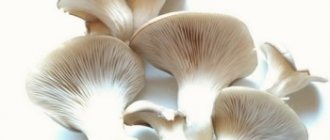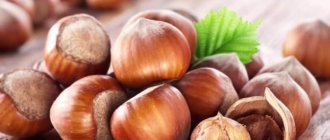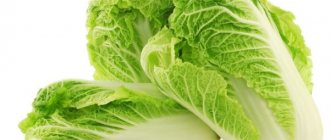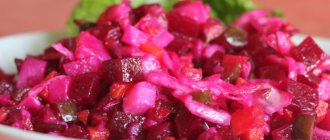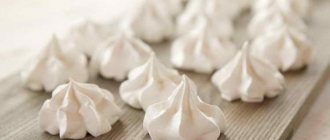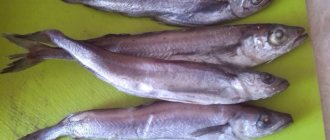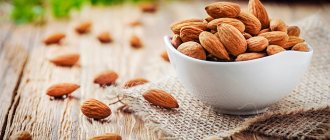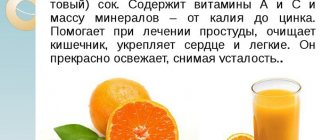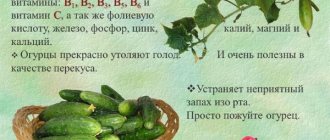Cottage cheese - 500 gr. Egg - 1 pc. Semolina - 2 tbsp. Butter - 20 gr. Sour cream - 20 gr. Salt - 5 gr. Granulated sugar - 30 gr. Add egg beaten with sugar, semolina, and salt to the pureed cottage cheese. Place the dough in a baking dish, brush with sour cream, and drizzle with melted butter. Bake in the oven at 180 degrees for 40 minutes.
In the article you will learn everything about the calorie content of cottage cheese casserole and which of its ingredients are effectively used in dietetics. We will share with you the secrets of preparing the most delicious casseroles, as well as several unusual recipes that you can easily implement.
Calorie content and consumption rate of this product
In addition to nostalgia for childhood, cottage cheese casserole can fill you up without adding extra weight. The calorie content of cottage cheese casserole per 100 grams of product is 160 kcal . Protein dominates this low-calorie dish. A casserole made from 1 kg of cottage cheese can provide the daily requirement of calcium for a family of 4, as well as most of the essential minerals for people who are lactose intolerant or do not like fermented milk products.
The dish is simple; you can find ingredients for the casserole in any store. This is also a good way to save money if the cottage cheese has been left in the refrigerator and has become harmful to the stomach: heat treatment will give it a second life and give you a pleasant experience. If you diversify the recipe, you can get both an appetizer and an elegant dessert.
The daily intake of cottage cheese for an adult is 250 g, for children under 9 years old – 100 g. For a child under 3 years old, it is better to make cottage cheese yourself. Let's see how many calories are in a regular cottage cheese casserole, and how many are in casseroles with different ingredients.
Calorie content of cottage cheese casserole with semolina per 100 grams
The calorie content of cottage cheese casserole with semolina per 100 grams is 215 kcal. 100 g of dish contains 12.9 g of protein, 9.4 g of fat, 20 g of carbohydrates.
The following ingredients are required for preparation:
- 0.4 kg of semi-fat cottage cheese;
- 3 eggs;
- 3 tablespoons of semolina;
- half a glass of sugar;
- salt to taste;
- 1 tablespoon butter;
- 2 g soda.
Read: Calorie content of stewed champignons
Recipe:
- eggs are mixed with sugar and cottage cheese;
- add 1 tablespoon of melted butter to the resulting mixture;
- the mixture is salted, mixed with soda slaked with vinegar;
- semolina is added to the egg-curd mass;
- The dough is laid out in a form sprinkled with semolina and baked for 50 - 60 minutes.
Calorie table depending on type
If you look at the calorie table for casseroles, you will see that the number of calories in cottage cheese casserole with semolina differs significantly from cottage cheese casserole with raisins. This will help us prepare casseroles correctly and at the same time not forget about the figure.
| Product | Calorie content (kcal) |
| calorie content of cottage cheese casserole without flour | 187 |
| calorie content of cottage cheese dietary casserole | 99 |
| from low-fat cottage cheese | 100 |
| from cottage cheese 5% | 153 |
| from cottage cheese 9% | 186 |
| calorie content of cottage cheese casserole, as in kindergarten | 231 |
| in a slow cooker | 178 |
| calorie content of cottage cheese casserole in the oven | 195 |
| calorie content of cottage cheese casserole with semolina | 179 |
| with semolina and sugar | 182 |
| with semolina without butter | 185 |
| calorie content of cottage cheese casserole with raisins | 202 |
| calorie content of cottage cheese casserole with semolina and raisins | 200 |
| with flour | 139 |
| with oatmeal | 218 |
| with apples | 136 |
| with banana | 162 |
| with dried apricots | 172 |
| with sour cream | 209 |
| with rice | 210 |
| with pasta | 228 |
Application
The casserole is used as an independent dish for breakfast or for an afternoon snack. You can serve it with condensed milk, fruits or berries. Often cottage cheese casserole is prepared for children in kindergarten. This dish is perfect for a nursing mother, as cottage cheese is very healthy and nutritious.
Market Analytics
- Global cosmetics market 2021: an unprecedented test for the global cosmetics industry
- Top 10 Cosmetic Research and Development of 2021
- 2020 in the beauty industry – innovation without borders
Convenient search for beauty salons on our website
Beauty salons in Moscow Beauty salons in St. Petersburg Beauty salons in Ekaterinburg Beauty salons in Novosibirsk
Latest blog posts on our website
- Naturecream / Properties of the “Sunny” oil itself
- Naturecream / “Sugar” wrinkles - or what glycation can do
- Naturecream / Esterified oils
- Naturecream / Arnica - the magical plant of alchemists
- Naturecream / Tremella Extract - Snow Mushroom Detox for Skin
- Prostye-sovety / How to visually enlarge your lips with makeup
- Naturecream / Apricot kernel oil for face
- Naturecream / MATRIXYL3000 - the best skin elasticity stimulator
- Naturecream / SPF in Natural Oils
- Naturecream / Geranium (Pelargonium) oil for skin health and beauty
Latest forum topics on our website
- Natalya / How to properly make a gelatin mask?
- Mrs._Smith / Badly sunburned! What to do?((
- Ice / Is it necessary to combine fitness classes with a diet?
- Antonova / What can be used for hair loss?
- Radio operatorKat / Who was on a protein diet?
Other articles in this section
| Ryazhenka 6% In every product that a person makes from milk, you can find many minerals, vitamins, proteins and fats that are useful and necessary for the body. One of these is ryazhenka 6%. |
| Ryazhenka 1% This delicious fermented milk product is obtained as a result of fermentation processes of alcohol and lactic bacteria. The drink has a delicate taste, slight sweetness and a beige tint. The fat content of fermented baked milk can range from 1% (low-fat) to 9%. |
| Cheese Chanakh The North Caucasus is considered the birthplace of this type of cheese. The name of the cheese comes from the fact that it is kneaded in special pots called vats. Today, Chanakh cheese is produced mainly by Armenian cheese makers. During production, white wine, honey or syrups are added to the cheese. Chanakh cheese belongs to a variety of pickled cheeses. Thanks to the special brine, the cheeses have a special taste: slightly salty and spicy aftertaste. |
| Pecorino cheese Pecorino is an Italian cheese; it is made from sheep's milk rather than cow's. |
| Matsoni from cow's milk Matsoni is a fermented milk product that is often found in traditional Caucasian cuisine. Its complex recipe is over two hundred years old and in its homeland healing properties have long been attributed to it. |
| Protein milk The most useful and valuable way to obtain all the necessary vitamins and minerals that every baby’s body needs is to consume milk. But due to the different fat content in this product, unwanted side defects may occur in the functioning of any organism. That is why scientists have developed such a product as protein milk. Its manufacturing process and undeniable beneficial effects were developed and proven by Professors Finkelstein and Meyer. These two scientists found that the treatment of diarrhea in infants is based on adding much more protein to their diet, which will help stop the diarrhea and greasy-soapy stools. |
| Danish cheese Danish cheese was created back in the twenties of the last century. Its creator is a resident of Denmark, whose name is Marius Bell. He developed it while trying to invent a much more economical version of Roquefort cheese. Danish cheese differs from its elite “brother” in that to ripen it does not need to be placed in a cave, and the raw material is not sheep’s milk, but cow’s milk, although the mold in it is of the same culture. Thanks to these differences, Danish cheese is significantly cheaper than cheese such as Roquefort. Danish cheese is quite popular all over the globe. It is made, however, only in a country like Denmark. This is what the European Union decided and decreed. |
| Tilsiter Cheese Tilsiter Cheese is a semi-hard, round, flat cheese made from cow's milk, which has a unique, inimitable taste and smell of cumin and black pepper. The cheese has a yellow color, cracks, small holes and a brown crust. The birthplace of the cheese is the town of Tilser in East Prussia. Its recipe was invented by immigrants from the Swiss province of Bern. The production of cheese in large quantities for other countries only began in the 19th century. This species has won the special trust and love of gourmets. This is an excellent treat for raw foodists. |
| Rougette cheese Rougette cheese is a cheese with an attractive and refined taste. Bavaria is considered the birthplace of this cheese. The basis of the product is cow's milk and cream. Its distinctive feature is the paprika-based crust, which turns red. And the characteristic ammonia taste, washing the cheese rind five times and an equally noticeable piquant smell distinguishes it from other soft varieties. |
| Milk 3.6% Milk 3.6% is a unique and balanced product containing a huge range of useful substances. In addition to its exceptional health benefits, milk also has excellent taste. |
How it is used in dietetics and for weight loss
Cottage cheese casserole is an easily digestible dish for the digestive system, so it can be offered to children, the elderly and those on therapeutic diets. However, it is necessary to pay attention to the component casseroles.
What makes a casserole dietary is the absence of flour or semolina in it, then cottage cheese casserole becomes a gift for those who are losing weight, as it diversifies the diet and gives taste pleasure, while remaining a healthy dish. Many vitamins, calcium and protein strengthen bones and the entire body.
And if you add other healthy foods to the casserole, you can get an energy set of vitamins and microelements. For example, a casserole goes well with seasonal berries - raspberries, blueberries, strawberries, wild strawberries; with fruits - apples, bananas, any herbs and seasonings.
Casseroles are often used in the famous Dukan diet, in the Kremlin diet, in the protein diet . Low-fat, low-calorie cottage cheese (0%) is, oddly enough, not recommended for dieting, as well as for a healthy diet in general. For quality life, the body needs a little fat, so for weight loss it is better to take cottage cheese from 1.8% to 5% fat.
It is better to eat cottage cheese casserole in the first half of the day, as it takes longer to digest fermented milk products.
In dietary nutrition, unsweetened casserole can be eaten with tomatoes, cucumbers, sweet peppers, and herbs. Berries can add sweetness to the casserole.
Popular recipes for preparing this product
Let's look at some simple and delicious recipes for cottage cheese casserole. To begin with, it should be noted that children are not the biggest fans of cottage cheese, which they need, which means a casserole is always the way out. Casseroles with cottage cheese do not have to be sweet (with raisins, dried apricots, prunes, candied fruits, pumpkin or carrots); they can be neutral and slightly salty (with potatoes, cauliflower or broccoli, herbs, olives).
It is best to prepare casseroles from homemade cottage cheese, then it will be nourishing and fluffy in appearance. You can find low-fat homemade cottage cheese on the market so as not to add centimeters to your waist.
The principle of preparing any casserole is the same: prepare a mold, lightly grease it with oil, sprinkle with semolina or flour, mix the ingredients, lay out, bake. To get a beautiful crust, you can grease it with yolk or sour cream. Cottage cheese casserole can be eaten either hot or cooled.
There are several secrets to making cottage cheese casserole:
- If the cottage cheese is runny, so that the casserole does not turn out wet, it is better to put it in a colander and wait a little until the liquid drains. You can also do this through gauze.
- To ensure that the casserole is lump-free, you can grind the cottage cheese through a meat grinder or rub it through a sieve. This way the casserole will be homogeneous, tasty and fluffy.
- It is better to buy low-fat and dry cottage cheese for casseroles.
- If you have fatty cottage cheese lying around waiting in the wings, then do not add products that contain fat (sour cream, cream).
- For a dietary casserole, if you don’t want to use cottage cheese alone, you can add sweet pumpkin or apples, then you won’t need sugar.
- If you like a looser casserole, then do not overuse eggs. Ideally, 2 eggs should be used per 500 g of cottage cheese.
- You cannot put the mixture for a future casserole in a preheated oven; it is better to raise the temperature with the mixture inside.
Regular cottage cheese casserole
You will need:
| fat cottage cheese | 250 g |
| egg | 2 pcs. |
| semolina | 1 tbsp. l. |
| vanillin | 2 g |
| orange zest | 1 tbsp. l. |
| sugar | 1 tbsp. l |
| salt | on the tip of a knife |
| soda | 1 tsp. |
| raisin | 30 g |
| dried apricots | 20 g |
How to cook:
- Thoroughly grind or twist the cottage cheese with the egg, add sugar, salt, soda, zest, raisins and dried apricots to the mixture, mix.
- Place the mixture in a greased form.
- Bake at 180 degrees for 40 minutes until golden brown.
Calorie content per 100 g of product – 240 kcal.
The nutritional value:
- proteins – 8.4 g;
- fats – 6.7 g;
- carbohydrates – 38.6 g;
- fiber – 1.2 g;
- water – 31.7 g.
BJU
Cottage cheese casserole with pasta
You will need:
| pasta | 250 g |
| cottage cheese 9% fat | 400 g |
| sugar | 0.5 stack. |
| soda | 1 tsp. |
| salt | 0.5 tsp. |
| butter | 50 g |
| crackers | 25 g |
How to cook:
- Boil 200 g of pasta.
- Mix 400 g of cottage cheese, half a glass of sugar, 1 tsp. soda, a little salt.
- Separately beat 3 egg whites, combine with curd mass and pasta.
- Grease the mold, sprinkle with breadcrumbs, and lay out the mixture.
- Drizzle melted butter on top.
- Sprinkle with breadcrumbs.
- Bake for up to 40 minutes at 180 degrees.
Calorie content per 100 g of product is 230 kcal.
The nutritional value:
- proteins – 11.2 g;
- fats – 9.1 g;
- carbohydrates – 27.3 g;
- fiber – 0.8 g;
- water – 33.4 g.
BJU
Curd casserole-pie
You will need:
| cottage cheese | 600 g |
| flour | 200 g |
| egg | 4 things. |
| butter | 150 g |
| sugar | 10 tbsp. l. |
| pitted cherries | 200 g |
| milk chocolate | 40 g |
| semolina | 2 tbsp. l. |
| soda | 1 tsp. |
| vanillin | 2 g |
How to cook:
- Flour, egg yolk, 4 tbsp. l. Mix sugar, melted butter and soda.
- We make the dough and divide it into two parts, where one is 20 percent more, the second is less.
- Most of it is crushed into shape by hand.
- Form a ball from the smaller part and place it in the freezer.
- Let's make the filling. Using a mixer, mix cottage cheese, three yolks, 6 tbsp. l. sugar, semolina and vanillin.
- Beat 4 egg whites until foamy and carefully fold into the curd mixture.
- Place cherries on the dough.
- Top with three smaller pieces of dough from the freezer.
- Sprinkle with grated chocolate.
- Place in the oven for 40 minutes. at a temperature of 180 degrees.
Calorie content of dietary cottage cheese casserole in a multicooker per 100 grams
The calorie content per 100 grams of dietary cottage cheese casserole when prepared in a slow cooker is 117 kcal. 100 g of sweet dish contains 12 g of protein, 3.6 g of fat, 9.4 g of carbohydrates.
Ingredients:
- 35 g raisins;
- 10 g fiber;
- 5 g olive oil;
- 100 g eggs;
- 10 g cocoa;
- 150 g 1.5 percent milk;
- 18 g oatmeal;
- 350 g 1.8 percent cottage cheese;
- 8 g poppy seeds;
- 5 g vanilla sugar;
- 90 g banana.
Read: Calorie content of oatmeal raisin cookies
Recipe:
- to prepare the casserole base, fiber, cocoa, egg, olive oil, and oatmeal are mixed;
- the layer of the casserole will be a laid out layer of bananas;
- the upper part of the dish is prepared as follows: cottage cheese is mixed with raisins, poppy seeds, vanilla sugar and banana; a mixture of eggs and milk is added to the resulting curd mass;
- the resulting 3-tier dietary casserole is baked until ready in a multicooker on baking mode.
Nutritional value and chemical composition
Calorie content 160 kcal.
The nutritional value:
Chemical composition:
- vitamin A;
- vitamin B1, B2, B4, B5, B6, B9, B12, H, PP;
- retinol;
- vitamin E;
- vitamin C;
- vitamin D;
- calcium;
- magnesium;
- silicon;
- potassium;
- sulfur;
- sodium;
- phosphorus;
- chlorine;
- aluminum;
- boron;
- iron;
- vanadium;
- cobalt;
- iodine;
- copper;
- nickel;
- molybdenum;
- manganese;
- selenium;
- tin;
- titanium;
- fluorine;
- chromium;
- zinc;
- starch;
- Sahara;
- cholesterol;
- sterols.
Vitamins and benefits of the product
Cottage cheese casserole retains all the beneficial properties of fresh cottage cheese. If for some reason a person does not eat meat, then the protein found in cottage cheese will successfully replace it. also easily digestible, so it will help those who are restoring the body after illness . Cottage cheese contains almost the entire group of vitamin B, which is necessary for the nervous system and cellular metabolism, to normalize the digestive system and blood sugar.
The casserole retains all the calcium found in fresh cottage cheese, therefore it is recommended for consumption by those for whom fresh cottage cheese can cause digestive problems. These are small children, old people, nursing mothers. Most products are combined with cottage cheese, which enhances its benefits. The casserole contains phosphorus, magnesium and potassium in a perfectly balanced form, which are necessary for the health of nails, hair, heart and blood vessels.
Cottage cheese casserole is useful for liver diseases; it contains methionine, an amino acid that improves the condition of liver cells.
Content of vitamins and microelements
The main component of the casserole is cottage cheese. And it contains a very large amount of calcium, which is required to strengthen bones (this element is very important for a growing body). The product contains vitamin B12 - this vitamin is important for the human nervous system. If it is not enough, then any stress can lead to depression and a nervous breakdown.
Cottage cheese also contains amino acids such as lysine and valine, tryptophan and methionine - these elements are extremely necessary for the functioning of the body. Cottage cheese casserole also contains a lot of fiber, which helps the body absorb food.
Video
A recipe for cottage cheese casserole without flour and sugar, but with dried fruits - very tasty, healthy and dietary.
If you are accustomed to the usual cottage cheese casserole of our childhood and do not know any other taste, be sure to try to experiment. Cottage cheese casserole can be a second course, an appetizer, a dessert, and a clever way to feed your child a healthy protein dish. Any product can be combined with cottage cheese, so you can try it many times, and believe me, not a single option will disappoint you. We are waiting for your stories about the most unexpected combinations in cottage cheese casseroles, share with us and our readers, you are especially interested in dietary casseroles.
The benefits of cottage cheese casserole
Dietary cottage cheese casserole without flour is one of the healthiest. It is perfect for both children and people with digestive problems. This dish will become indispensable in the menu of a person suffering from hepatitis, since, in fact, it is a very light dietary dish. Low-calorie cottage cheese casserole is also good for those who adhere to the Kremlin diet.
One name - cottage cheese casserole takes us back to distant childhood; this is a dish that should definitely be returned to your diet.
Dietary cottage cheese casserole can serve as an independent dish or as a light dessert.
Diet casserole recipes:
All recipes are easy to prepare and do not require any special investment of time or money, or any culinary skills. The ingredients are simple: cottage cheese, eggs, kefir and raisins. All! In order to diversify the dish, some add prunes and dried apricots to it.
The calorie content of cottage cheese casserole is very low - only 90 Kcal per 100g.
As you know, dietary cottage cheese casserole plays an important role in the development of the child’s body. Cottage cheese is rich in calcium, protein and is one of the best foods in terms of its nutritional properties, and raisins are a storehouse of mineral salts, vitamins and organic acids. Therefore, this is an ideal recipe for small children under the age of even one year.
Options for preparing dietary cottage cheese casserole
Today, many recipes are used to prepare cottage cheese casseroles without flour. But the main ingredients are usually the same for everyone: cottage cheese, eggs. By the way, when preparing this dish, you can add to the dough not only fruits, which have become traditional for cottage cheese casserole, but also vegetables, primarily pumpkin.
To prepare a low-calorie cottage cheese casserole you will need:
- 2 eggs,
- 250 g cottage cheese,
- 2 tablespoons low-fat kefir,
- 2 teaspoons sugar (or to taste)
- a handful of raisins.
Beat the eggs, mix 250 g of cottage cheese with two tablespoons of kefir. Then combine the two masses into one and add sugar and raisins. You can also use apple, prunes or dried apricots.
Place the curd mixture into a greased pan and place in the oven for 30-40 minutes. This casserole can be very easily prepared in a double boiler. To do this, make sure that the kit includes a special bowl for rice, casseroles and other liquid products.
Calorie content of cottage cheese casserole in the oven per 100 grams
The calorie content of cottage cheese casserole cooked in the oven is 195 kcal per 100 grams. In 100 g of dish there are 14.1 g of protein, 10.4 g of fat, 11.5 g of carbohydrates.
For cooking you need the following products:
- 0.5 kg of cottage cheese;
- 2 tablespoons of semolina;
- 1 egg;
- 20 g butter;
- salt to taste;
- 30 g sugar.
Recipe:
- cottage cheese is mixed with egg, salt and semolina;
- the baking dish is greased with sour cream and sprinkled with 20 g of melted butter;
- The casserole is baked in the oven at 180° C for 35 – 45 minutes.
